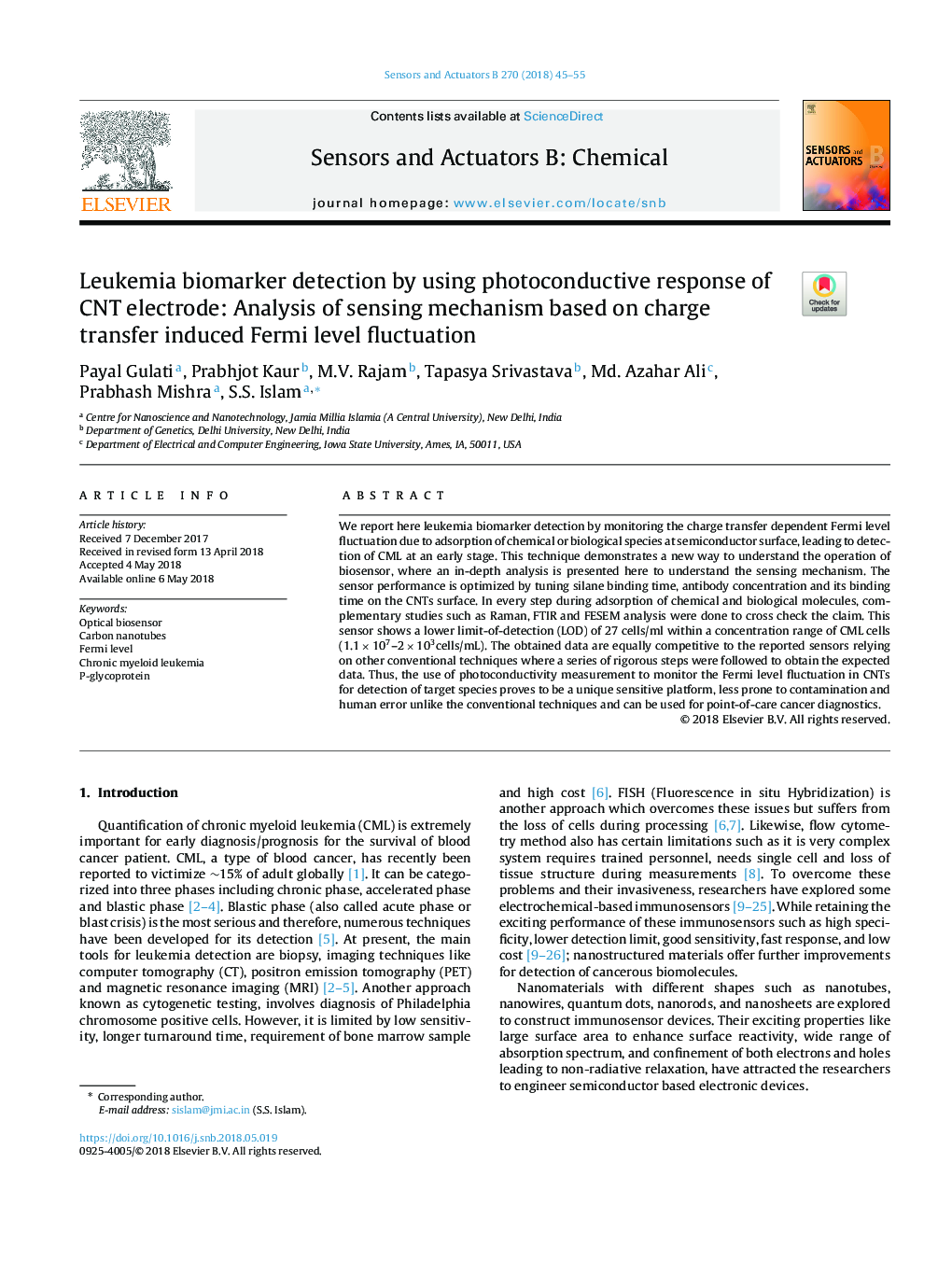| Article ID | Journal | Published Year | Pages | File Type |
|---|---|---|---|---|
| 7139030 | Sensors and Actuators B: Chemical | 2018 | 11 Pages |
Abstract
We report here leukemia biomarker detection by monitoring the charge transfer dependent Fermi level fluctuation due to adsorption of chemical or biological species at semiconductor surface, leading to detection of CML at an early stage. This technique demonstrates a new way to understand the operation of biosensor, where an in-depth analysis is presented here to understand the sensing mechanism. The sensor performance is optimized by tuning silane binding time, antibody concentration and its binding time on the CNTs surface. In every step during adsorption of chemical and biological molecules, complementary studies such as Raman, FTIR and FESEM analysis were done to cross check the claim. This sensor shows a lower limit-of-detection (LOD) of 27 cells/ml within a concentration range of CML cells (1.1â¯Ãâ¯107-2â¯Ãâ¯103cells/mL). The obtained data are equally competitive to the reported sensors relying on other conventional techniques where a series of rigorous steps were followed to obtain the expected data. Thus, the use of photoconductivity measurement to monitor the Fermi level fluctuation in CNTs for detection of target species proves to be a unique sensitive platform, less prone to contamination and human error unlike the conventional techniques and can be used for point-of-care cancer diagnostics.
Related Topics
Physical Sciences and Engineering
Chemistry
Analytical Chemistry
Authors
Payal Gulati, Prabhjot Kaur, M.V. Rajam, Tapasya Srivastava, Md. Azahar Ali, Prabhash Mishra, S.S. Islam,
